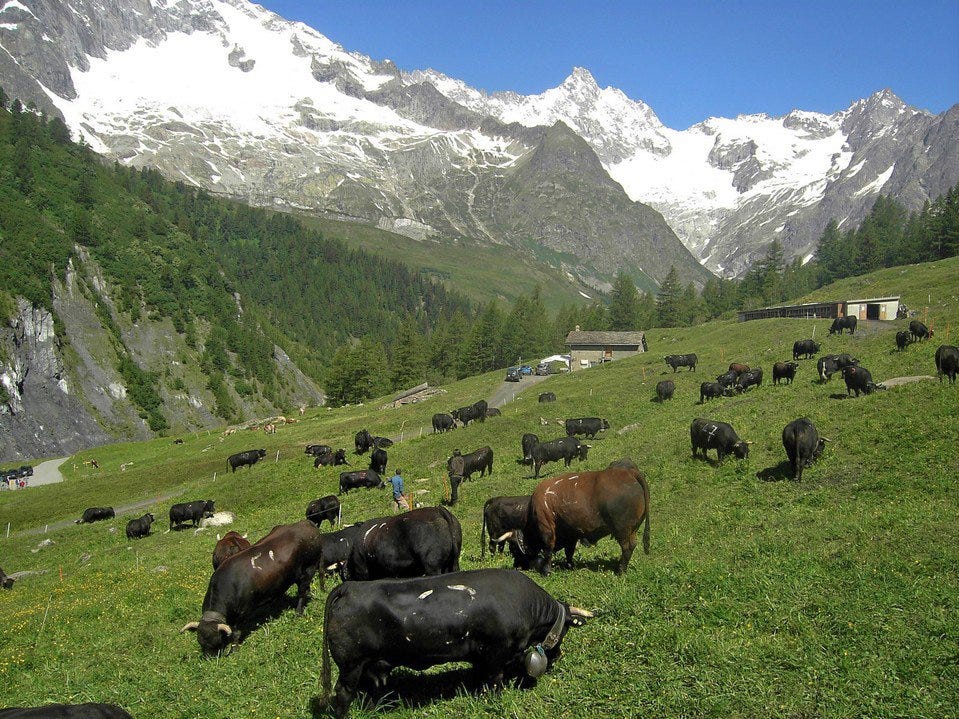
FOR A VERY LONG TIME, I wasn’t interested in Raclette at all. Fire, cheese, melting, and potatoes to me said everything there was to say about both the cheese and the dish, which appeared to be just cheese melted in an awkward way. (I didn’t automatically find flames special; in the past, I’ve burned a lot of wood for heat.) I still haven’t tasted Raclette roasted primevally before a fire. Finally, however, I became curious. I’m learning. I have a wholly different view. Although the dish and the eponymous cheese have spread over the world, it’s crucial that they originated in the French-speaking canton of Valais in Switzerland. Raclette was and is the cheese of its place.
The name Raclette comes from racler, to “scrape.” A wheel weighs roughly five kilos, and to melt it in the pure, original way you set half a wheel with the cut side facing the flames. The cheese bubbles; you may like it golden brown. It may gain a touch of smoke. In one swipe of a dull knife, the melted portion is scraped off onto a plate, where it’s joined by potatoes in their skins, cornichons, pickled baby onions, and, usually, cured meats. The cheese offers richness and a bit of earthy funk. To drink, if you’re loyal to the Valais, you may opt for a glass of the white wine Fendant. When the half-wheel has been scraped a few times, the roasted edge of crust protrudes, and it’s sliced off for those who enjoy it. To them, it’s the “religieuse,” for its divine taste. The meal is an event, something for a cold winter day, part of a rustic time spent in the mountains.




